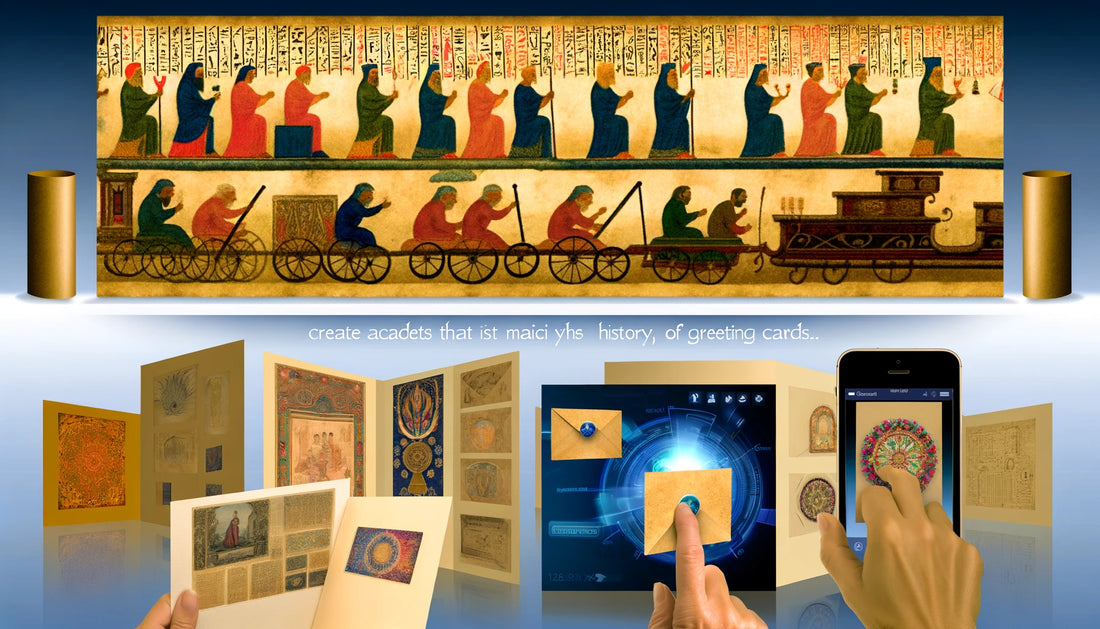Greeting cards have played a significant role in human communication and social expression for centuries. Their evolution from ancient traditions to the digital age reflects broader changes in society, technology, and the ways we connect with each other. This blog post delves into the fascinating history of greeting cards, tracing their origins, development, and the impact of digital technology on this enduring practice.
Ancient Beginnings
The tradition of sending greeting cards can be traced back to ancient civilizations. In ancient China and Egypt, messages of goodwill were exchanged to celebrate the New Year. These early forms of greetings were often conveyed on papyrus scrolls in Egypt and similarly precious materials in China. They served not only as messages of goodwill but also as symbols of status and prosperity.
Middle Ages to Renaissance: The Emergence of Handmade Paper Cards
The practice of sending greeting messages evolved significantly with the advent of paper. In the 15th century, Europeans began to send handmade paper cards to one another. The Germans are credited with creating the first Christmas cards, used to convey wishes for the New Year. By the Renaissance, the exchange of handmade greeting cards had become a popular tradition among the nobility and wealthy, often embellished with gold leaf, intricate designs, and heartfelt messages.
19th Century: The Birth of Mass-Produced Greeting Cards
The industrial revolution brought about significant changes in the production and distribution of greeting cards. In the 19th century, advances in printing technology and the postal service made greeting cards more accessible to the general public. In 1843, Sir Henry Cole commissioned the first commercial Christmas card in London, featuring a festive scene and the greeting "A Merry Christmas and a Happy New Year to You." This innovation marked the beginning of the mass-produced greeting card industry.
20th Century: The Golden Age of Greeting Cards
The 20th century saw the greeting card industry flourish. Companies like Hallmark, founded in 1910, revolutionized the market by offering a wide range of cards for different occasions, complete with pre-written verses. The greeting card became a staple of social etiquette, used to celebrate birthdays, holidays, and special occasions, as well as to express sympathy, congratulations, and other sentiments.
Digital Age: E-cards and Social Media
The advent of the internet and digital technology in the late 20th and early 21st centuries transformed the way we send greetings. E-cards emerged as a convenient, eco-friendly alternative to traditional paper cards, allowing users to send animated, interactive messages instantly and often for free. Social media platforms further changed the landscape, enabling people to post public greetings and create virtual cards that can

